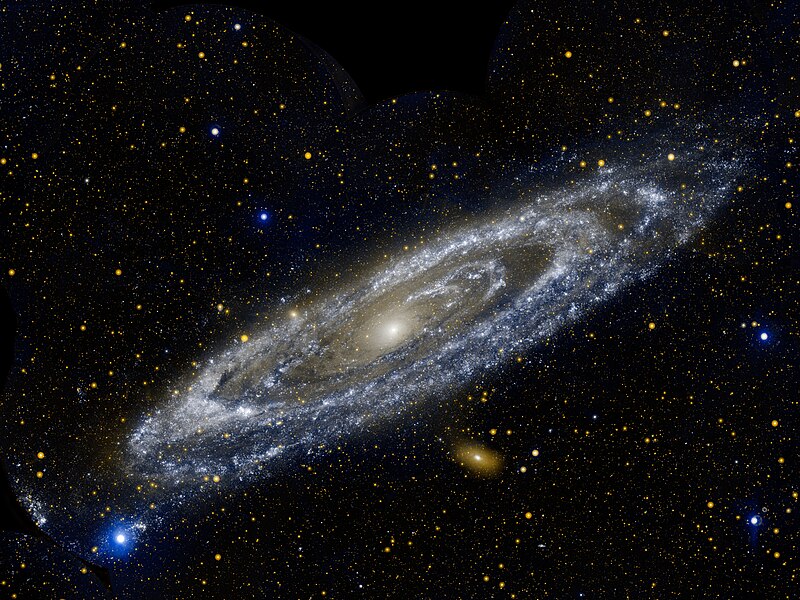Датотека:Andromeda galaxy 2.jpg

Величина овог приказа: 800 × 600 пиксела. 6 других резолуција: 320 × 240 пиксела | 640 × 480 пиксела | 1.024 × 768 пиксела | 1.280 × 960 пиксела | 2.560 × 1.920 пиксела | 6.000 × 4.500 пиксела.
Оригинална датотека (6.000 × 4.500 пиксела, величина датотеке: 21,44 MB, MIME тип: image/jpeg)
Историја датотеке
Кликните на датум/време да бисте видели тадашњу верзију датотеке.
| Датум/време | Минијатура | Димензије | Корисник | Коментар | |
|---|---|---|---|---|---|
| тренутна | 12:09, 21. мај 2012. |  | 6.000 × 4.500 (21,44 MB) | Originalwana | {{Information |Description ={{en|1=Hot stars burn brightly in this image from NASA's Galaxy Evolution Explorer, showing the ultraviolet side of a familiar face. At approximately 2.5 million light-years away, the Andromeda galaxy, or M31, is our [[:C... |
Употреба датотеке
Следећа страница користи ову датотеку:
Глобална употреба датотеке
Други викији који користе ову датотеку:
- Употреба на af.wikipedia.org
- Употреба на an.wikipedia.org
- Употреба на ar.wikipedia.org
- Употреба на bg.wikipedia.org
- Употреба на de.wikipedia.org
- Употреба на de.wikibooks.org
- Употреба на en.wikipedia.org
- Употреба на eu.wikipedia.org
- Употреба на fr.wiktionary.org
- Употреба на hr.wikipedia.org
- Употреба на it.wikipedia.org
- Употреба на ja.wikipedia.org
- Употреба на ko.wikipedia.org
- Употреба на lb.wikipedia.org
- Употреба на lv.wikipedia.org
- Употреба на no.wikipedia.org
- Употреба на pl.wiktionary.org
- Употреба на pt.wikipedia.org
- Употреба на ro.wikipedia.org
- Употреба на scn.wikipedia.org
- Употреба на sh.wikipedia.org
- Употреба на simple.wikipedia.org
- Употреба на sv.wikipedia.org
- Употреба на ta.wikipedia.org

